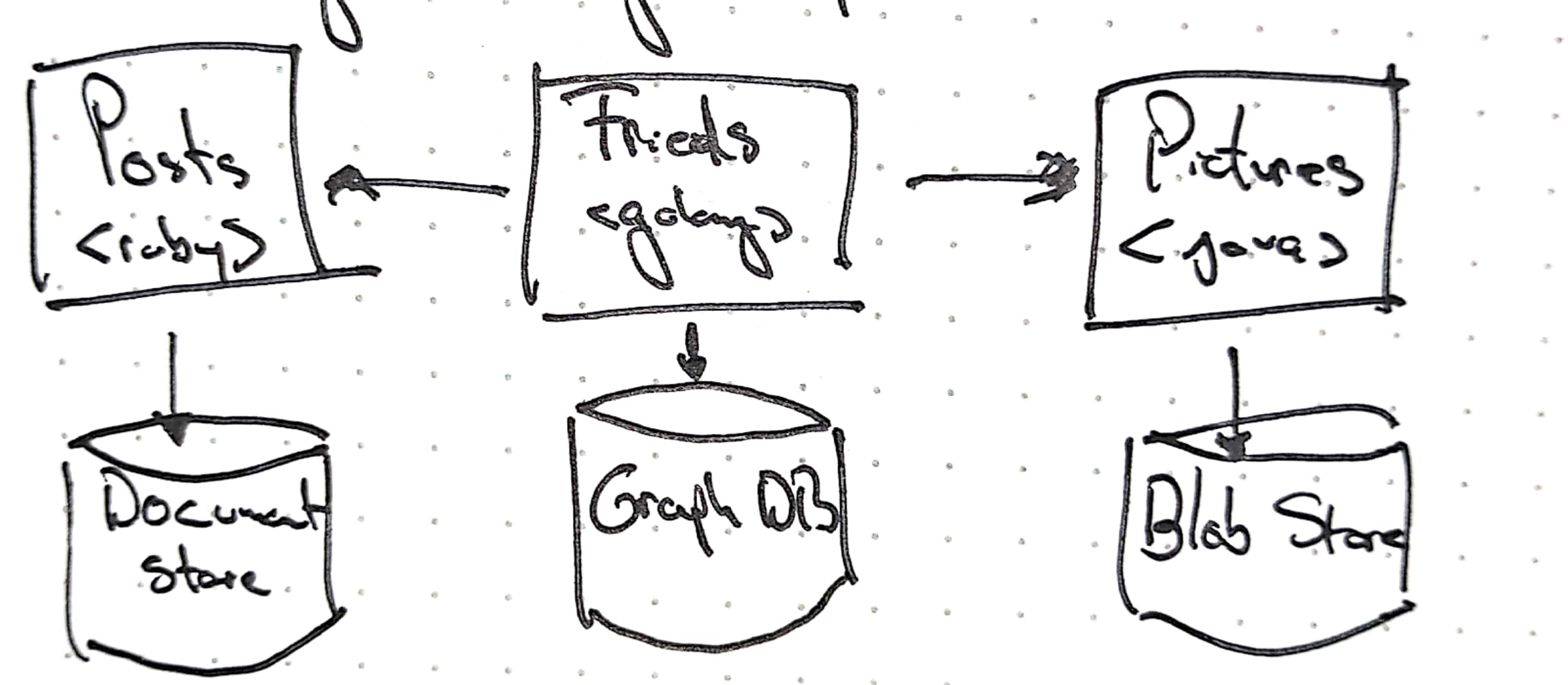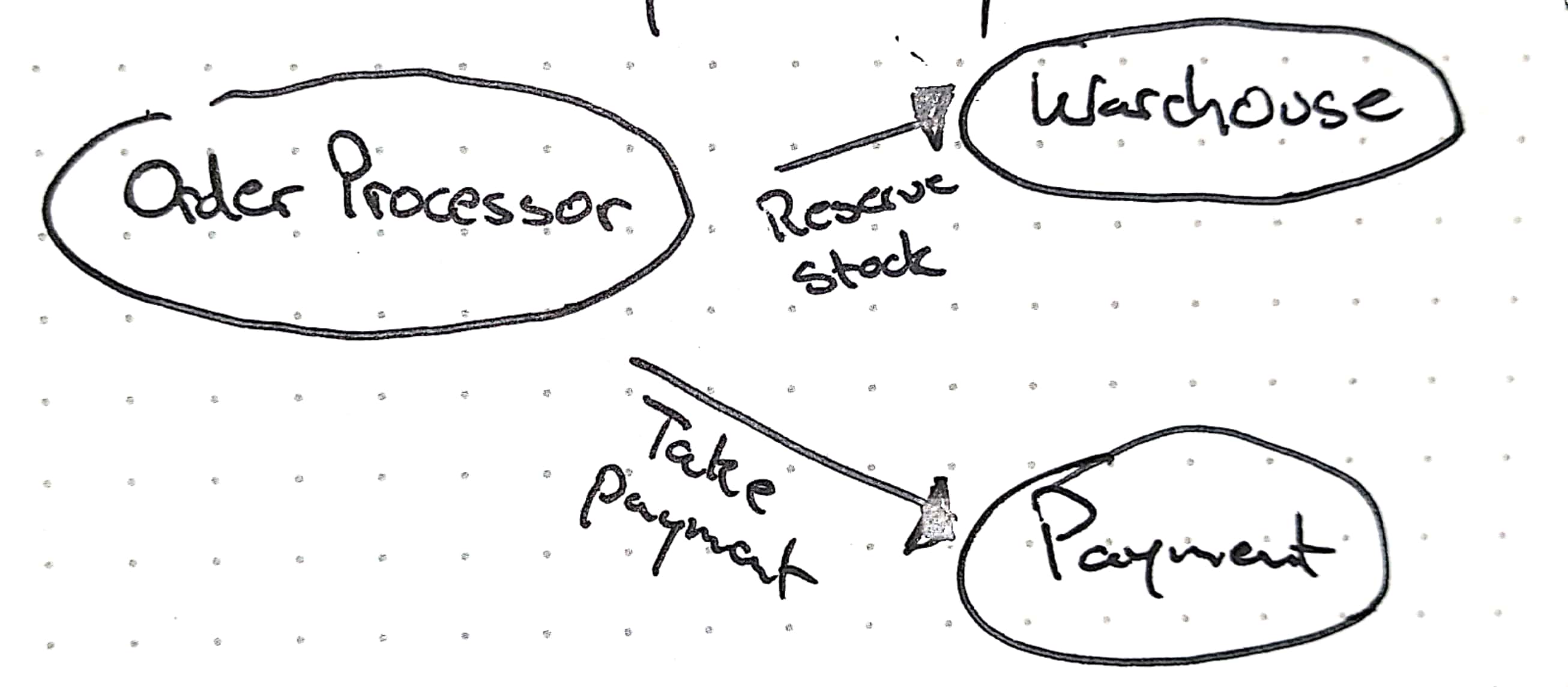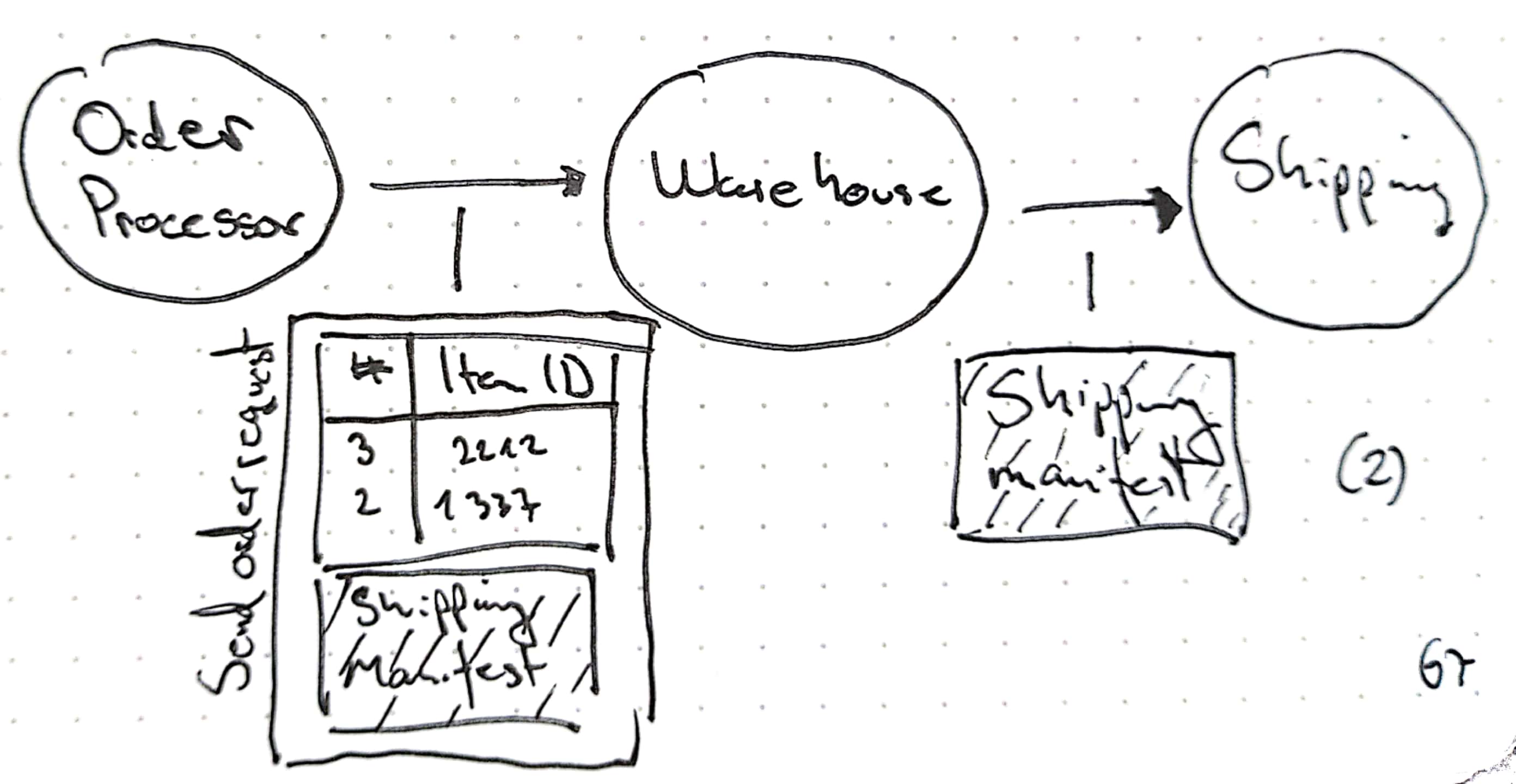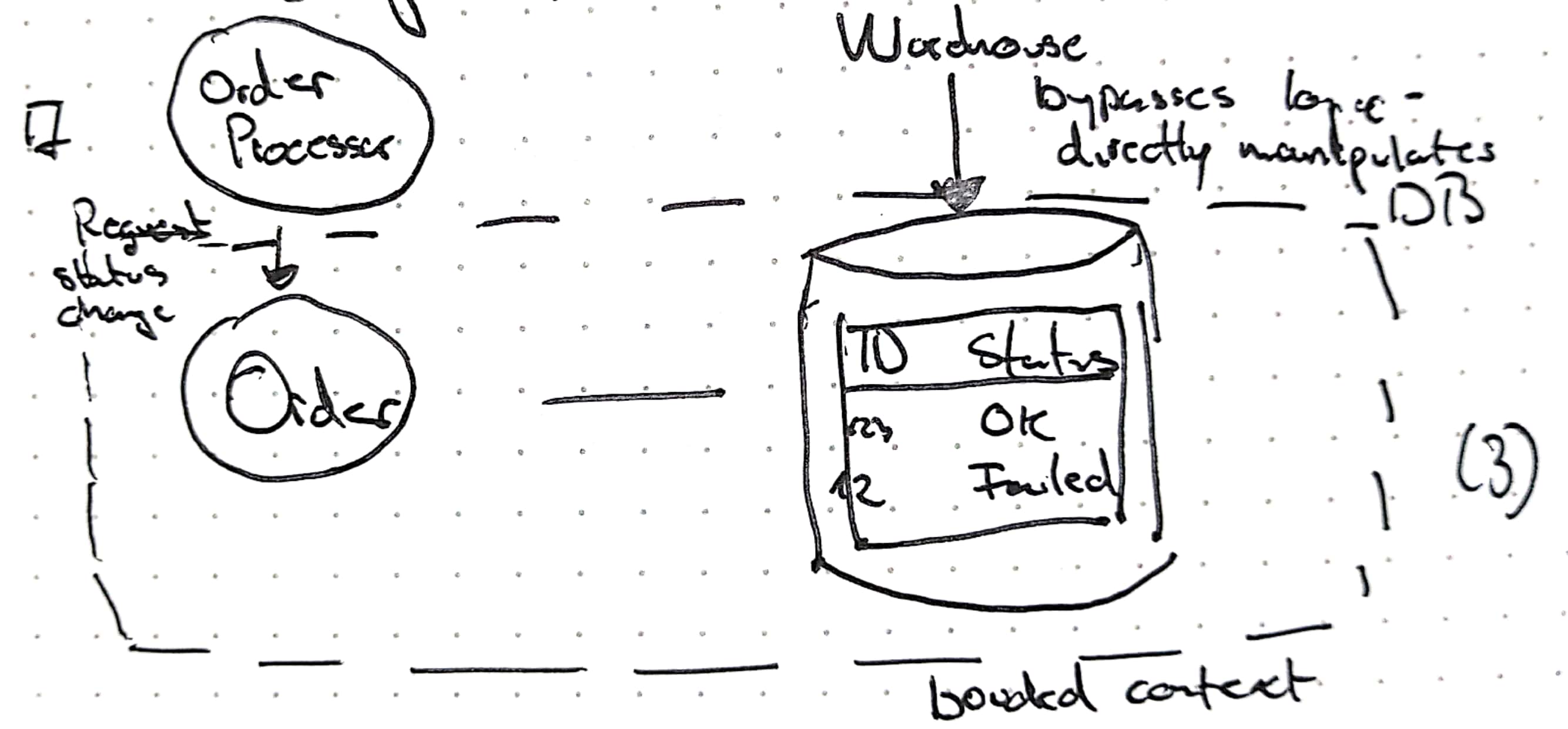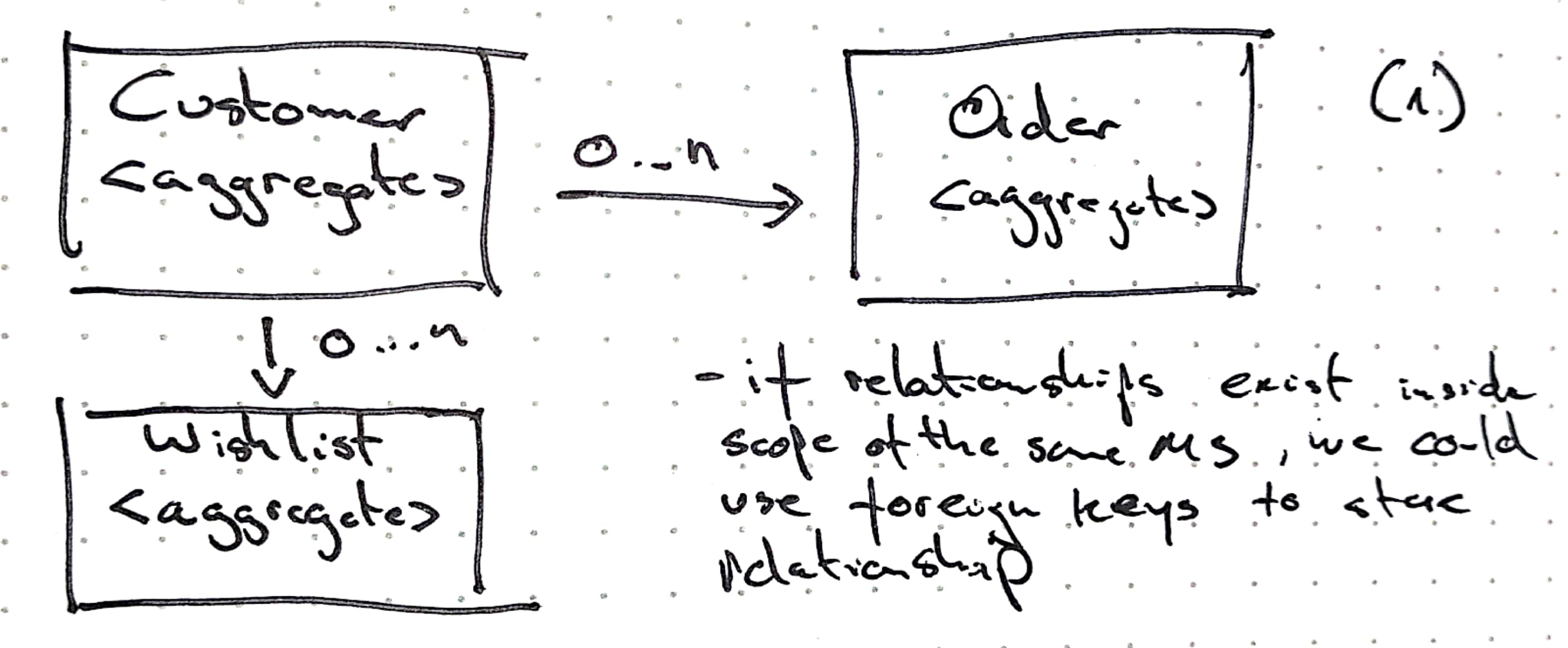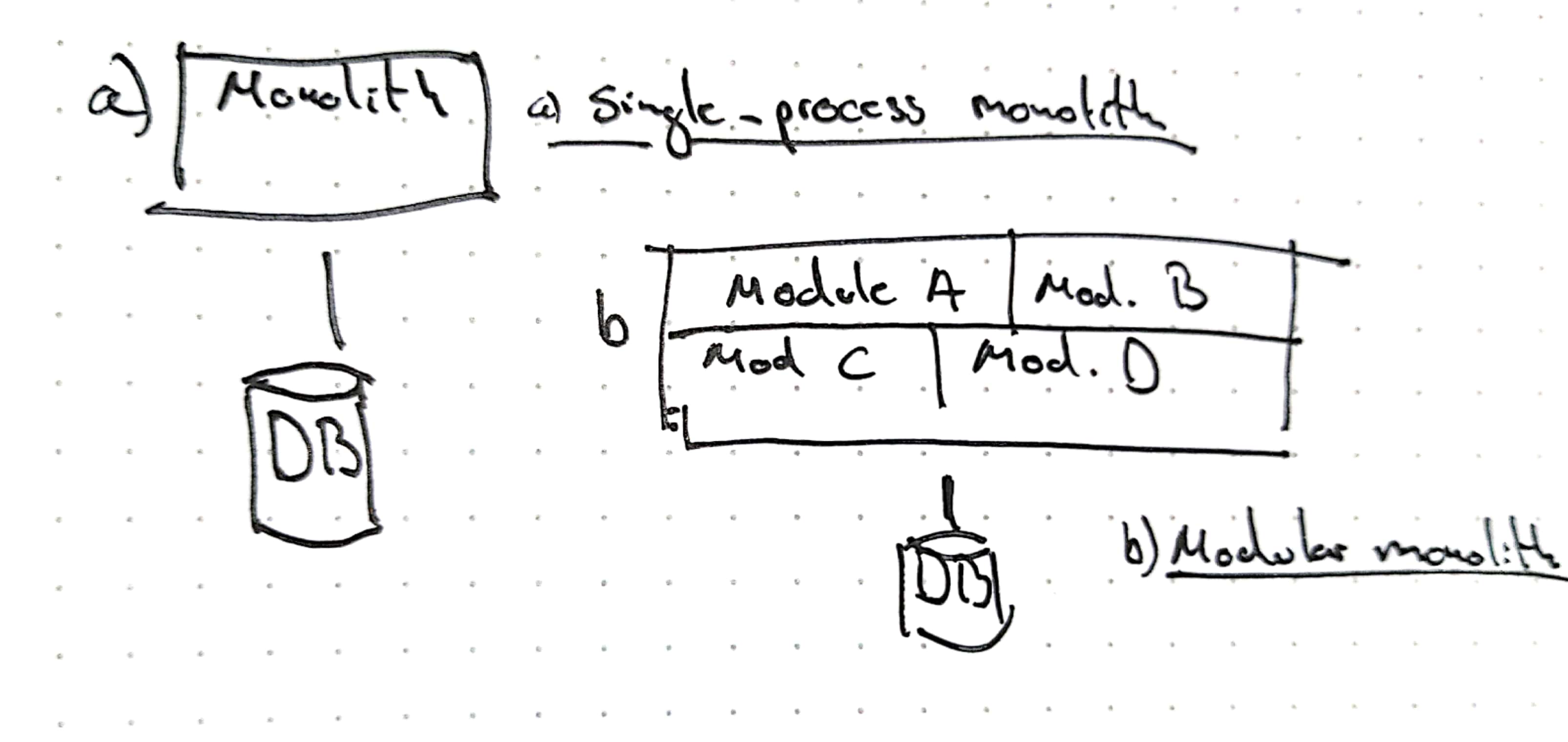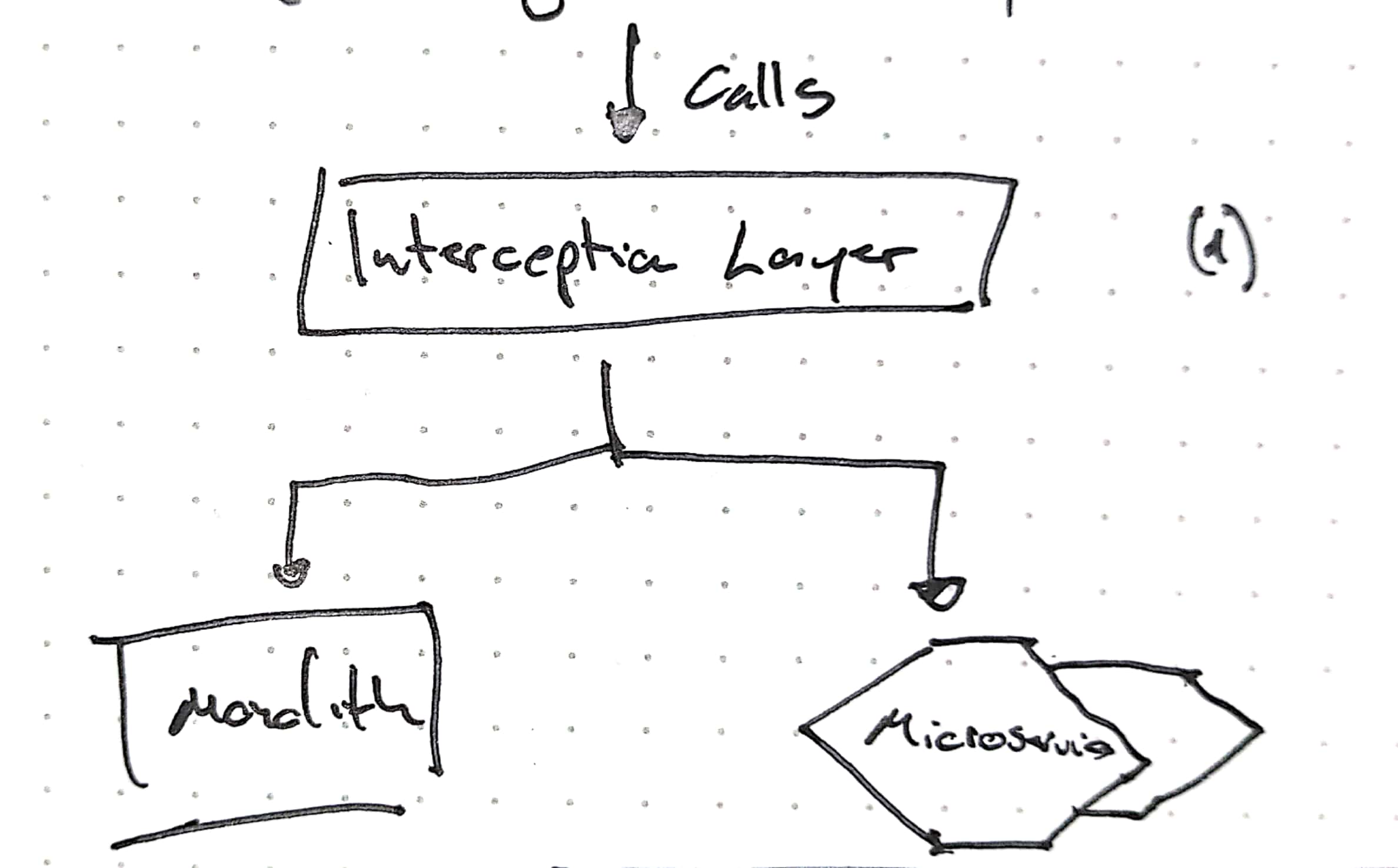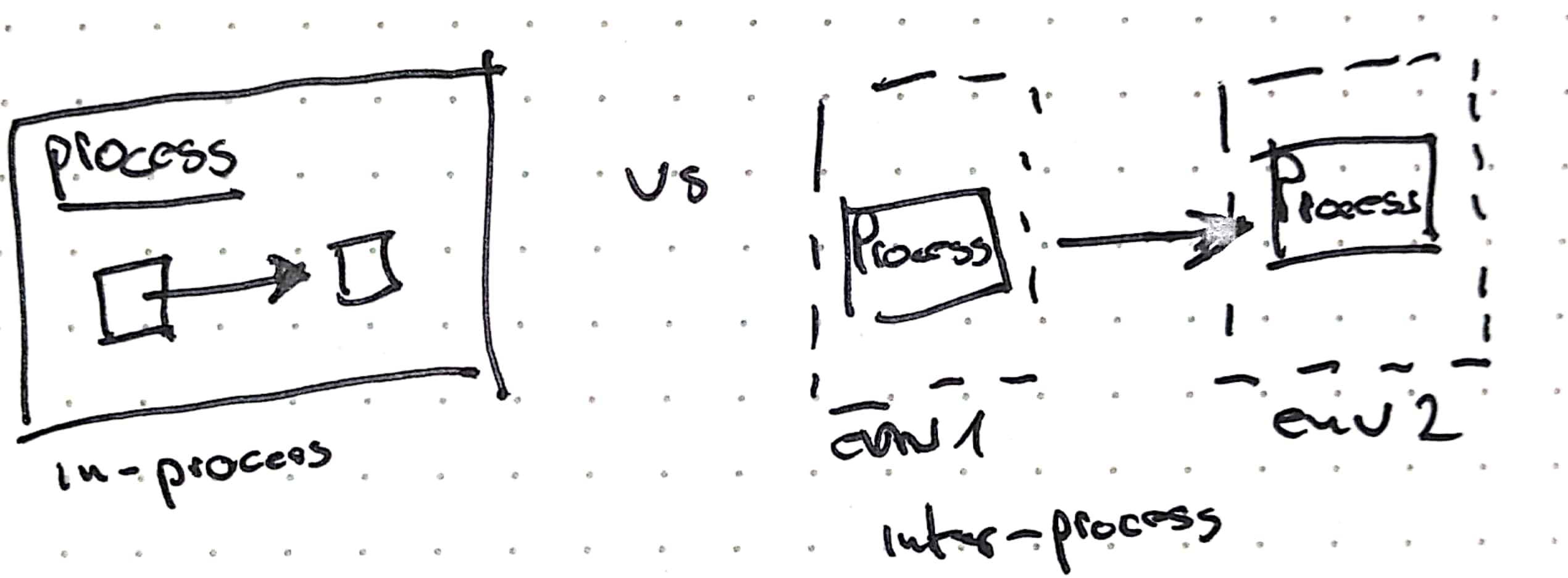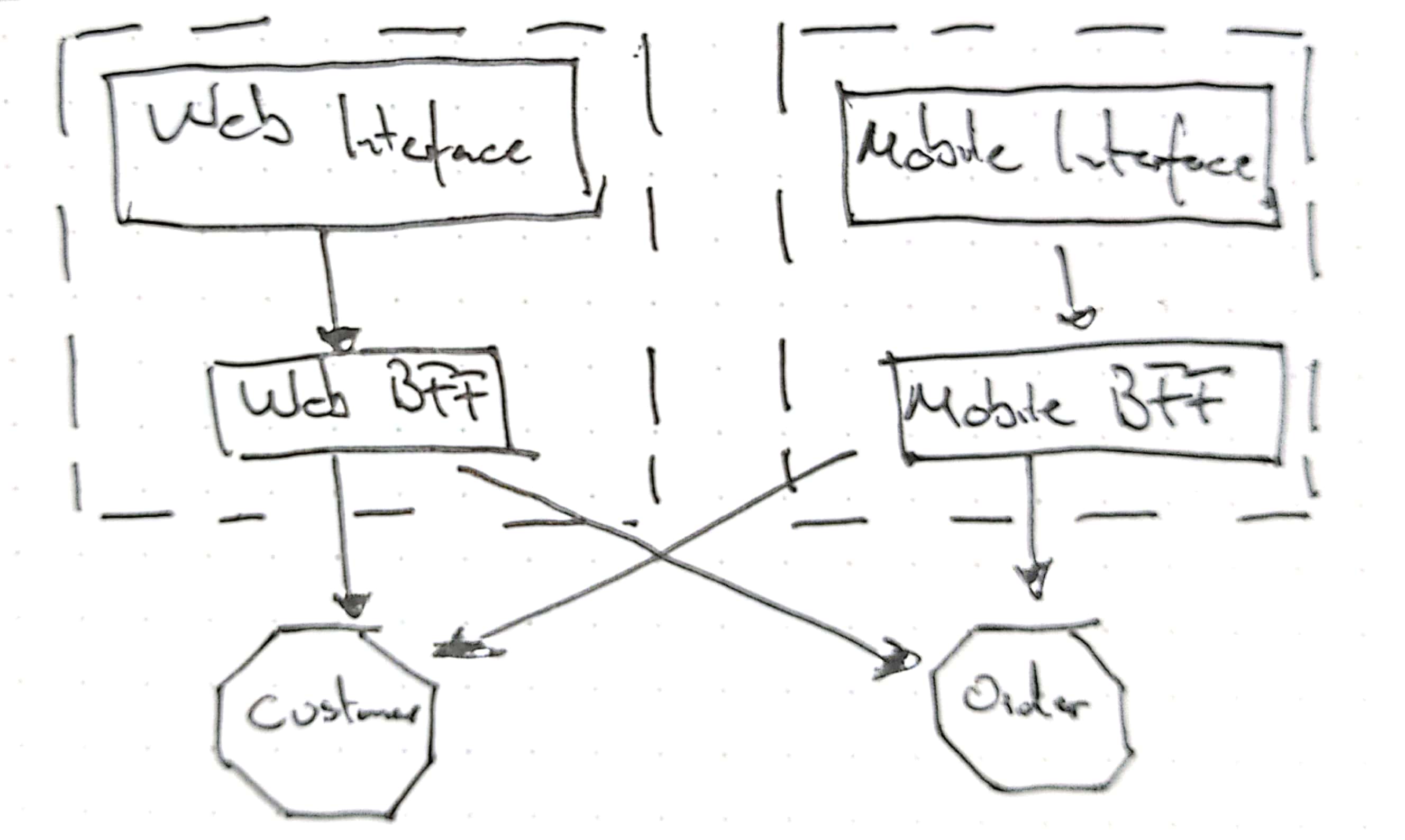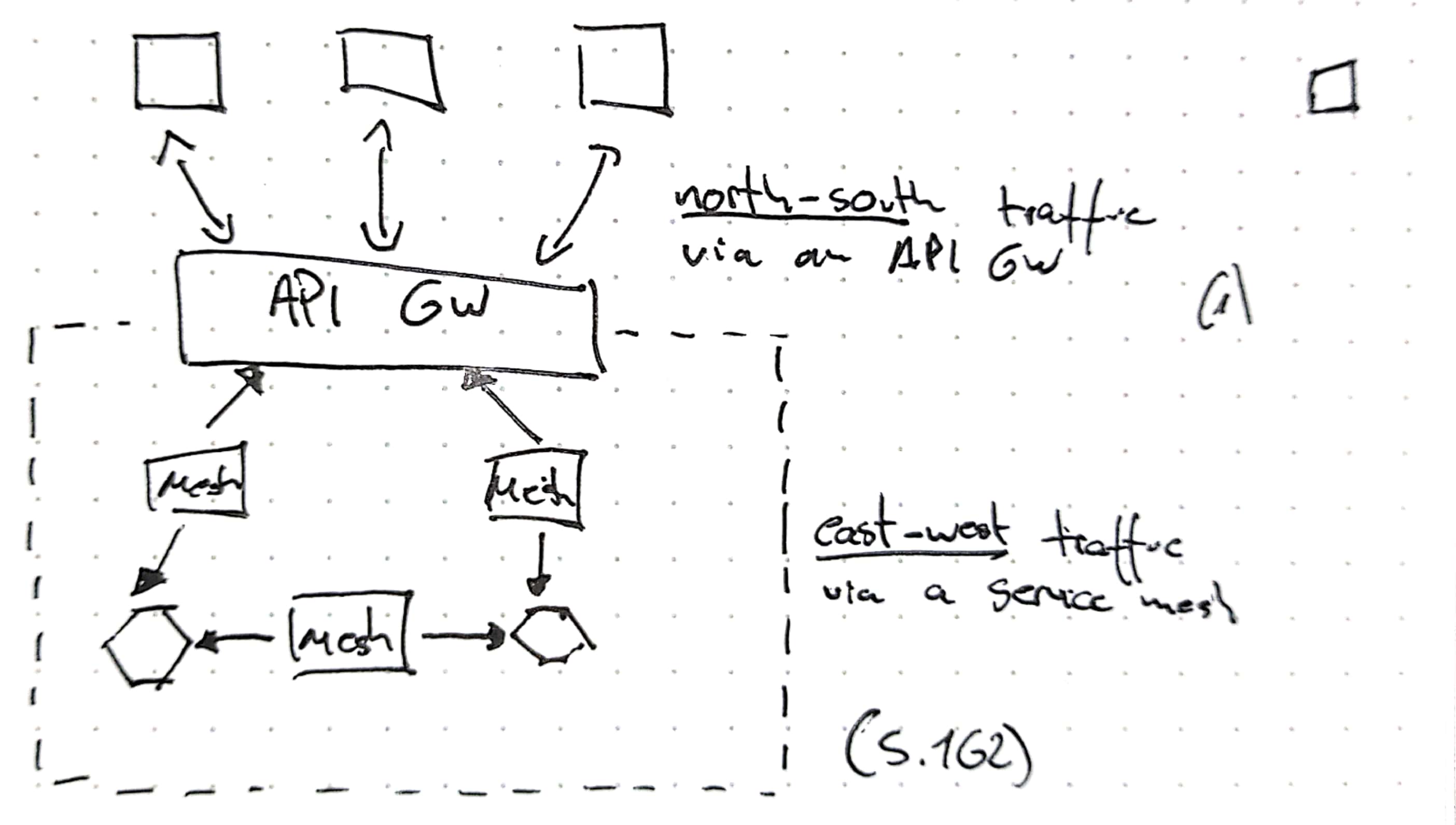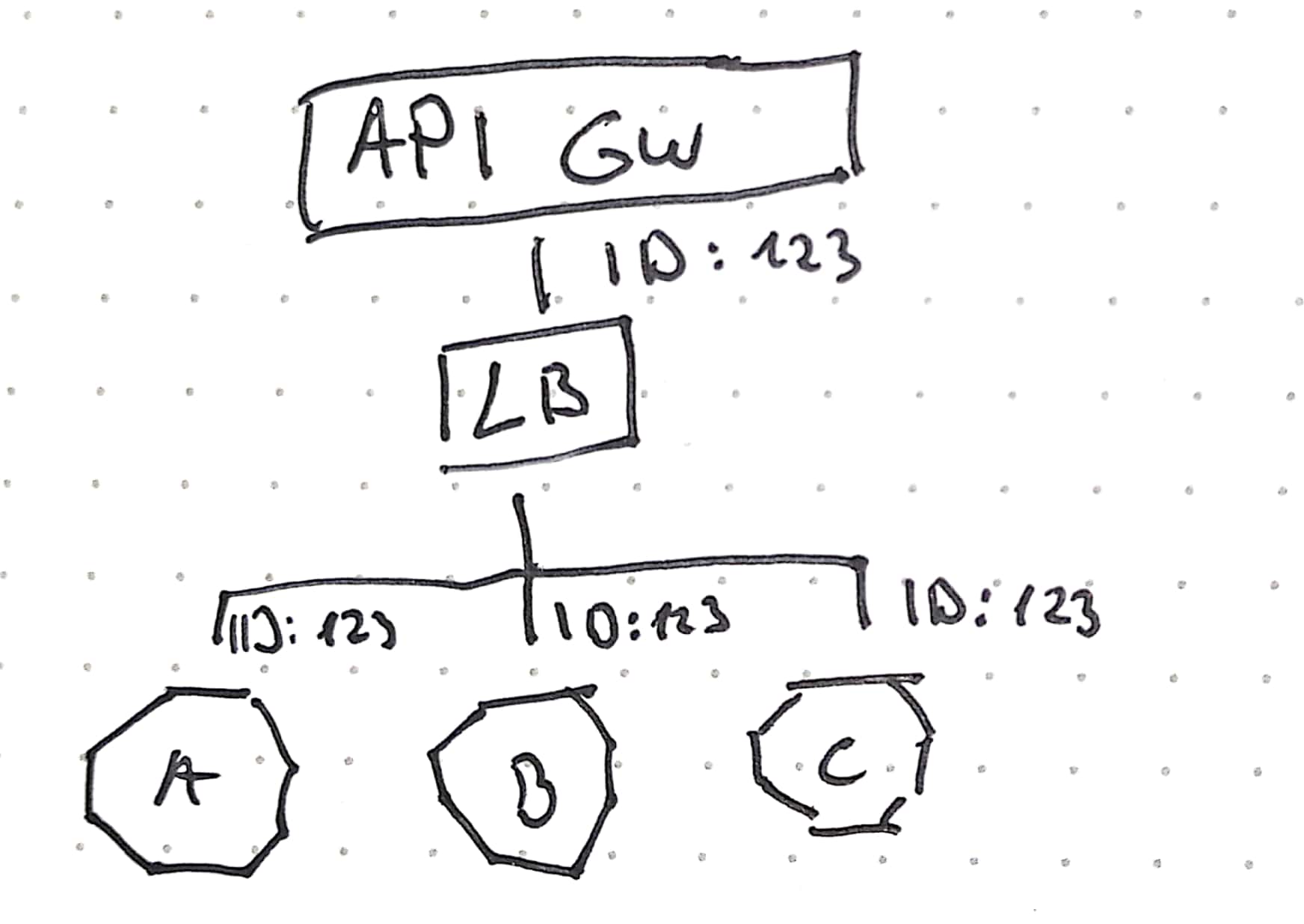Notes
Ch. 1: What are Microservices?
Definition
Microservices are independently releasable services that are modeled around a business domain. A service encapsulates functionality and makes it accessible to other services via networks.
- Microservices are a type of SOA architecture
- service boundaries are important
- independent deployability is key
- Microservices embrace the concept of Information hiding
Key Concepts
-
Independent deployability
- criteria for this: make sure microservices are loosely coupled
- be able to change one service without having to change anything else
- criteria for this: make sure microservices are loosely coupled
-
Modeled around a business domain
- definition of service boundaries (see DDD)
-
Owning their own state
- hide internal state (same as encapsulation in OOP)
- clean delineation between internal implementation details and external contract
- be backward-compatible
- hide database that backs the service
- avoid DB showing
-
Size
“A microservice should be as big as my head” - James Lewis
- keep it to the size at which it can be easily understood
-
Flexibility
“Microservices buy you options” - James Lewis
- they have a cost and you must decide whether the cost is worth the options you want to take up
-
Alignment of architecture and organization
“Organizations which design systems are constrained to produce designs which are copies of the communication structures of the organization” - Melvin Conway
- have team vertically organized
- same team owns front-end, business logic, data, back-end, security
- a so called stream-aligned team
- same team owns front-end, business logic, data, back-end, security
- have team vertically organized
Advantages
- Technology Heterogeneity
-
Robustness
- a component in a system can fail but as long as the problem doesn’t cascade, the rest of the system still works
-
Scaling Book recommendation: The art of scalability
-
Ease of Deployment
- fast delivery of features
- decreases fear of deployment (see Accelerate)
- change a single service and deploy it independently of the system
-
Organizational alignment
- small teams working on small code bases tend to be more productive
- microservices allow us to better align our architecture to our organization
- minimize the number of people working in the team
- helps to find the sweet spot of team size and productivity
- minimize the number of people working in the team
-
Composability
- reusable components
- allow functionality to be consumed in different ways
- for different purposes: website, desktop, mobile application etc.
Pain Points
-
Developer Experience
- new technologies are options not requirements
- when adopting microservices
- you’ll have to understand issues around data consistency, latency, service modeling
- and how these ideas change the way you think about software development
- it takes time to understand new concepts
- this leads to less time developing new features
-
Technology overload
-
Costs
-
Reporting
- data and logs are scattered across multiple components
-
Monitoring and troubleshooting Book recommendation: Distributed Systems Observability
-
Security
-
Latency
-
Data consistency
Ch. 2: How to model microservices
Cohesion
- code that changes together, stays together
- strong cohesion
- ensure related behavior is at one place
- weak cohesion
- related functionality is spread across the system
Coupling
- loosely coupled
- change to one service should not require a change to another
- a loosely coupled services knows as little as it needs about the services it communicates with
- limitation of number of different types of calls is important
Interplay of coupling and cohesion
A structure is stable if cohesion is strong and coupling is low.
- cohesion applies to the relationship between things inside a boundary
- coupling describes relationship between things across a boundary
- still: there is no best way how to organize code
Types of coupling
-
Domain coupling
- one microservice interacts with another microservice because it needs the functionality the other microservice provides
- considered as a loose form of coupling
- again, information hiding: Share only what you absolutely have to, and send only the absolute minimum amount of data that you need
-
Pass-through coupling
- one microservice passes data to some other microservice because data is needed by another microservice
-
Common coupling
- when 1 or 2 microservices make use of a common set of data
- use of shared DB
- use of shared memory/filesystem
- problem: changes to data can impact multiple microservices at once
- better solution would be to implement CRUD operations and let only 1 microservice handle shared DB operations
- when 1 or 2 microservices make use of a common set of data
-
Content coupling
- when an upstream service reaches into internals of a downstream service anc changes its internal state
DDD
DDD stands for Domain-Driven Design.
-
Concepts
-
Ubiquitous language
- use the same terms in code as the user use
- have common language between delivery team and actual people (aka customers)
- helps to understand business by logic
- helps with communication
- use real-world language in code
-
Aggregates
-
a representation of real domain concept
- something like an
Order, anInvoice,Stock Item
- something like an
-
aggregates typically have an information cycle around them
-
in general
-
aggregate as something that has
- state
- identity
- information cycle
that will be managed as part of the system
-
-
aggregates can have relationships to other aggregates
-
-
Bounded context
- a larger organizational boundary
- within it explicit responsibilities need to be carried out
- bounded contexts hide implementation details (Information hiding)
- bounded contexts contain
1-naggregates- some aggregates may be exposed outside the bounded context
- others may be hidden internally
- a larger organizational boundary
-
-
Event Storming
- collaborative brainstorming exercise designed to help design a domain model
- invented by Alberto Brandolini
-
Boundaries between microservices
There are some factors when defining clear boundaries between microservice
- volatility
- data
- also with concern to security
- technology
- organizational
- Layering Inside vs Layering Outside
Ch. 3: Split the monolith
- you need to have a goal before moving to microservices
-
should be a conscious decision
-
without clear understanding of what you want to achieve, you could fall into the trap of confusing activity with outcome
Spinning up a few more copies of your existing monolith system behind a load balancer may well help you scale your system much more efficiently than going through a complex and length decomposition to microservices.
-
Decomposition patterns
-
Strangler fig pattern By Martin Fowler
-
Parallel run
-
Feature toggles
Data Decomposition concerns
- performance
- data integrity
- transactions
- Tooling
- Reporting DB
Ch. 4: Communication styles
- styles for IPC communications
- synchronous blocking
- asynchronous blocking
- request-response
- Event-Driven Architecture
- Common data
EDA
- events vs messages
- event: is a fact
- message: is a thing
- a message contains an event
Ch. 5: Implementing communication
Criterias for ideal technology
-
backward compatibility
-
make your interface(s) explicit
- use of explicit schemas Like OpenAPI
-
keep your APIs technology-agnostic
-
make your service simple for the consumers
-
hide internal implementation details
Technology choices
-
- SOAP
- gRPC
-
REST Book recommendation: REST in Practice: Hypermedia and Systems Architecture (by Jim Webber, Savas Parastatidis, Ian Robinson)
-
GraphQL
-
Message brokers
- use queues/topics
API Gateway
- built on top on existing HTTP proxy products
- main function: reverse proxy
- but also authentication, logging, rate limiting
- Examples:
Ch. 6: Workflow
Distributed Transactions
-
Two-phase Commits (2PC)
- a commit algorithm to make transactional changes in a distributed system, where multiple separate parts need to be updated
-
Sagas
- coordinate multiple changes in state
- but without locking resources for a long period
- involves
- backward recovery
- forward recovery
- allows to recover from business failures not technical ones
- when rollback is involved, maybe a compensating transaction is needed
-
Books
Ch. 7: Build
- on Continuous Integration (CI)
- how to organize artifacts
- monorepo
- multirepo
Ch. 8: Deployment
Principles of Microservices Deployment
-
isolated execution
- own computing resources
- don’t impact other microservices instances
-
focus on automation
- adopt automation as core part of your culture
-
Infrastructure as a Code Book: Infrastructure as Code: Managing Servers in the Cloud
-
zero-downtime deployment
- independent deployability
- new deployment of microservices can be done without downtime to users/clients of microservices
- independent deployability
-
desired state management
- maintain microservices in a defined state
- allocate new instances if needed
- GitOps
- brings together desired state management and IaC (Infrastructure as Code)
- maintain microservices in a defined state
-
progressive delivery
- implement many of the ideeas in Accelerate
- separate deployment from release
- feature releases
- use as part of trunk-based development
- not yet finished functionality can be deployed and hidden from users (e.g. feature toggles)
- functionality can still be turned on/off
- canary releases
- parallel runs
Ch. 10: From monitoring to obersavability
The observability of a system
-
is the extenct to which you can understand the internal state of the system from external output
-
monitoring is something we do
- it’s an activity
-
observability
- rather a property of a system
-
pillars of observability
- metrics
- logging/logs
- events
- traces
Alert fatigue
Alert fatigue—also known as alarm fatigue—is when an overwhelming number of alerts desensitizes the people tasked with responding to them, leading to missed or ignored alerts or delayed responses – Source Also a good reading: Alarm design: From nuclear power to WebOps.
-
What makes a good alert
An alert has to be:
- relevant
- unique
- timely
- prioritized
- give enough information to decide in which order alerts should be dealth with
- understandable
- information has to be clear and readable
- diagnostic
- it needs to be clear what is wrong
- advisory
- help the operator understand what actions need to taken
- focussed
- draw attention to the most important issues
-
On the importance of testing
“Not testing in production is like not practitioning with the full orchestra because your solo sounded fine at home”
Semantic monitoring
- compare against normal conditions
- you could use synthetic transactions
- other options
- A/B testing
- canary releases
- Chaos engineering
- parallel runs
- smoke tests
Tools
Ch. 11: Security
Lifecycle of secrets
- Creation
- How we create the secret
- Distribution
- How do we make sure the secrets get to the right place?
- Storage
- Is the secret stored in a way only authorized parties can access it?
- Monitoring
- Do we know how secret is used?
- Rotations
- Are we able to change the secret without causing problems?
Ch. 12: Resiliency
Resiliency
-
defined by David D. Woods Book: Resilience Engineering: Concepts and Precepts
-
aspects
- robustness
- ability to absorb perturbation
- rebound
- recover after a traumatic event
- graceful extensibility
- how to deal with an unexpected situation
- sustained adaptability
- adapt to changing environments, stakeholders and demands
- robustness
Ch. 14: User interfaces
Stream-aligned teams
-
topologies how to build organizations, teams Book recommendation: Team Topologies: Organizing Business and Technology Teams for Fast Flow
-
aka “full-stack teams”
-
a team aligned to a single, valuable stream of work
-
the team is empowered to build and deliver customer or user value as quickly and independently as possible, without requiring hand-offs to other teams to perform parts of the work
Microfrontends
-
architectural style where independently deliverable frontend applications are composed into a greater whole Check out Martin Fowler’s article.
-
possible implementations
- widget-based decomposition
- page-based decomposition
SCS
-
stands for Self-Contained Systems Read more on the official site
-
highlights
- each SCS is an autonomous web application with no shared UI
- each SCS is owned by one team
- asynchronous communication should be used whenever possible
- no business code can be shared between multiple SCSs
Ch. 15: Organizational structures
- Stream-aligned teams
- concept aligns with loosely-coupled organizations (as in Accelerate)
Conways Law
“Any organization that designs a system will inevitably produce a design whose structure is a copy of the organizations communication structure” - Melvin Conway
All about people
“Whatever industry you operate in, it is all about your people, and catching them doing things right, and providing them with the confidence, the motivation, the freedom and desire to achieve their true potential” - John Timpson Also interesting is the concept of paved roads, where best-practices are available but deviations are also allowed.
Ch. 16: The evolutionary architect
Role of architects
- We should think of the role of IT architects more as town planners than architects for the built environment Sam uses the Seagram Building (designed by Mies van der Rohe) as an universal place to visualize the role of an (IT) architect.
Buildings and software
The comparison with software should be obvious. As our users use our software, we need to react and change. We cannot foresee everything that will happen, and so rather than plan for any eventuality, we should plan to allow for change by avoiding the urge to overspecify every last thing. Our city (the system) needs to be a good, happy place for everyone who uses it. One thing that people often forget is that our system doesn’t just accommodate users; it also accommodates developers and operations people who also have to work there, and who have the job of making sure it can change as required.
Governance
Governance ensures that enterprise objectives are achieved by evaluating stakeholder needs, conditions and options; setting direction through prioritisation and decision making; and monitoring performance, compliance and progress against agreed-on direction and objectives. – Cobit 5
Responsibilities of the evolutionary architect
- Vision
- clearly communicated technical vision for the system that will help meet requirements of customers and organization
- Empathy
- understand impact of decissions on customers and colleagues
- Collaboration
- engage with as many of your pears and colleagues as possible to help define, refine and execute the vision
- Adaptability
- tech vision changes as required by customers/organization
- Autonomy
- balance between standardizing and enabling autonomy for your teams
- Governance
- system being implemented fits the tech vision
- make sure it’s easy for people to do the right thing
